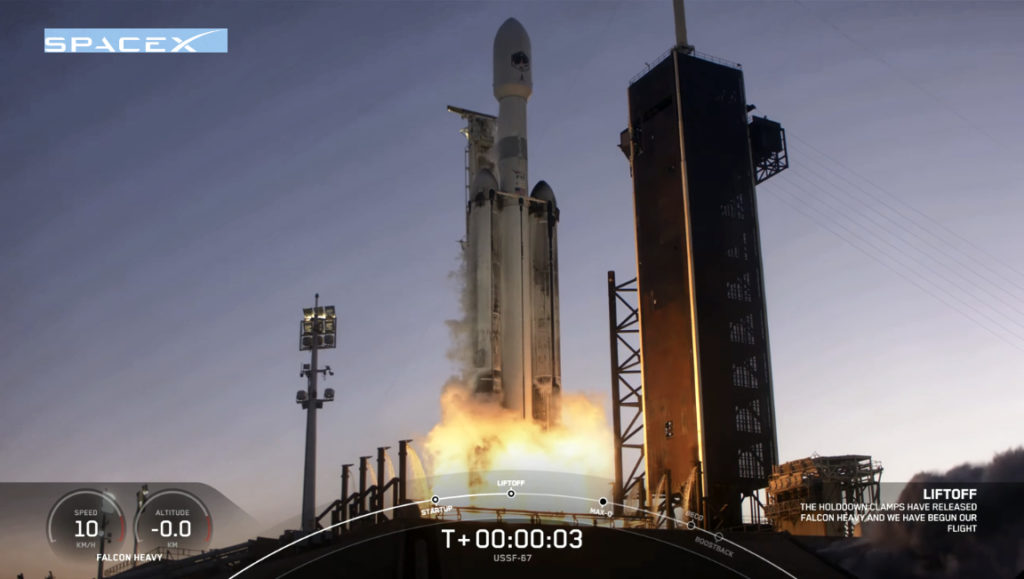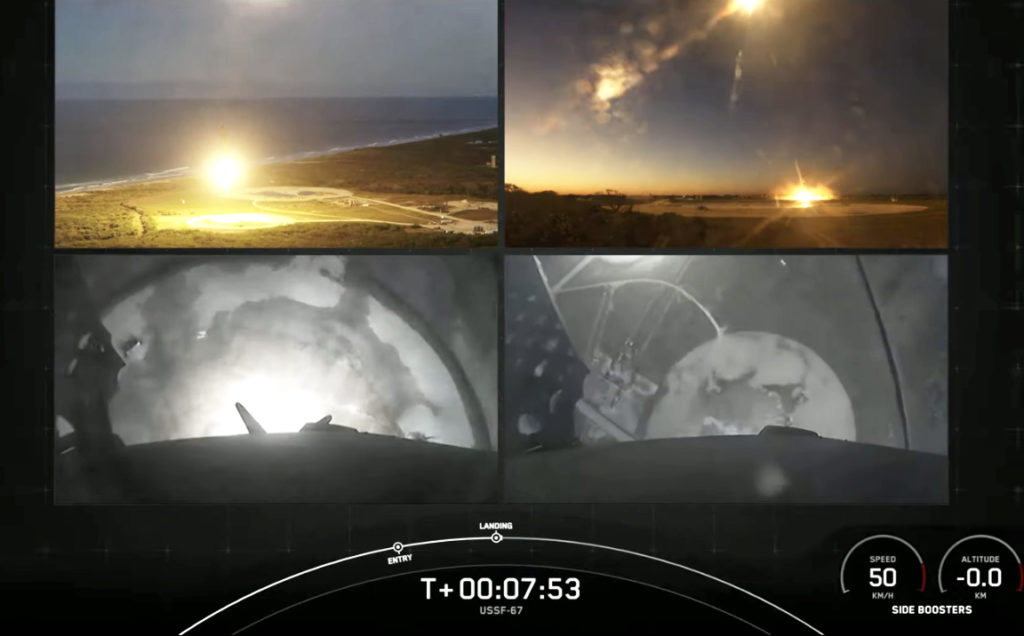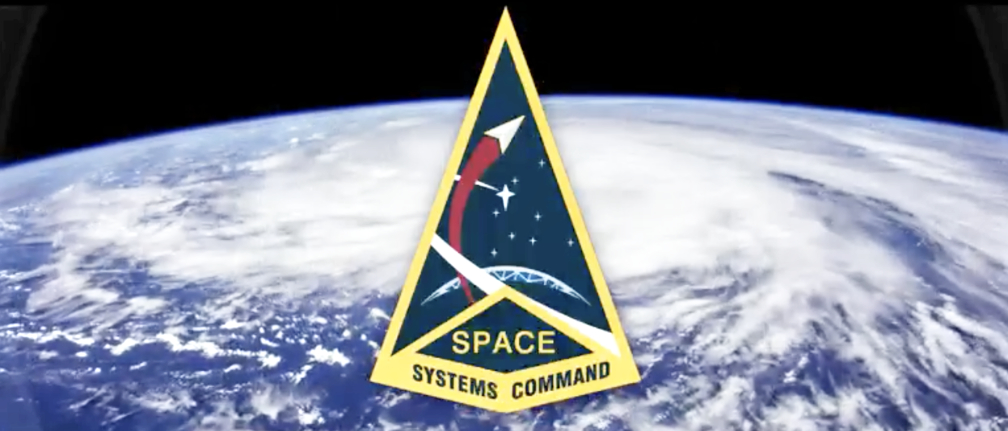
SpaceX has successfully launched the U.S. Space Force‘s USSF-67 mission from Kennedy Space Center’s Launch Complex 39A on January 15, 2023, with the liftoff of this National Security Space Launch (NSSL) payload aboard a Falcon Heavy rocket. Both of the rocket’s side boosters successfully returned to Landing Zone 1 and Landing Zone 2 safely.

This mission is the fifth SpaceX Falcon Heavy to date and the heavy-lift vehicle’s second NSSL mission and is comprised of two, co-manifested satellites that will be used to transmit military communications data as well as transport payloads to space.
The forward spacecraft, SSC’s Continuous Broadcast Augmenting SATCOM (CBAS)-2, is a satellite destined for GEO to provide communications relay capabilities in support of senior leaders and combatant commanders. The mission of CBAS-2 is to augment existing military satellite communication (MILSATCOM) capabilities and continuously broadcast military data through space-based satellite relay links.
The second spacecraft, the Long Duration Propulsive ESPA (LDPE)-3A, is used to rapidly place multiple, diverse payloads into orbit and provide critical data to inform and influence future U.S. Space Force programs. This LDPE-3A mission includes two SSC payloads: catcher and WASSAT, and three payloads developed by the Space Rapid Capabilities Office (SRCO).
The SRCO payloads include two operational prototypes for enhanced situational awareness, and an operational prototype crypto/interface encryption payload providing secure space-to-ground communications capability. The LDPE spacecraft will continue to provide access to space for multiple DoD space Science & Technology (S&T) demonstration experiments.
Northrop Grumman Corporation‘s (NYSE: NOC) Long Duration Propulsive ESPA (LDPE)-3A spacecraft was successfully in support of the USSF-67 mission — this spacecraft helps advance rapid access to space for the U.S. Space Force and marks the third successful launch in the LDPE program.

Image credit: Northrop Grumman
The LDPE-3A was built using Northrop Grumman’s ESPAStar, providing rapid access to space by maximizing the available volume inside a launch vehicle. This bus carries hardware for five independent missions, eliminating the need for each mission to wait for a future launch opportunity.
Northrop Grumman also designed, developed and implemented the command and control, and mission execution software system for the LDPE program. The software system uses a common baseline across multiple programs, putting more capability in the hands of customer operators at a lower cost. The ESPAStar product employs a customized version of a standard ESPA ring, providing added propulsion, power and avionic subsystems.
USSF-67 is the third mission for the LDPE program. The Northrop Grumman-built LDPE-1 launched aboard the STP-3 mission in December 2021 and LDPE-2 aboard the USSF-44 mission in November 2022. Northrop Grumman will continue to deliver future ESPAStar spacecrafts, mission systems engineering, ground software systems and hardware platforms for critical USSF missions.
“From conception and development of next-generation space technology, like ESPAStar, to on-orbit command and control, we are prepared to support the full lifecycle of our customer’s missions throughout the ever-evolving threat environment,” said Troy Brashear, vice president, national security systems, Northrop Grumman.
This Falcon Heavy launch is the first for the NSSL program this year and the first SpaceX launch from the NSSL Phase 2 contract. NSSL Phase 2 contracts use commercial-like contracts and pricing, saving significant taxpayer dollars while providing stability to the industry base, contributing to more efficient buying practices as well as manifest flexibility that benefits government and commercial customers alike.
A prominent innovation developed by SpaceX and adopted by the U.S. Space Force is booster reusability. The side boosters for USSF-67 were the same ones used for USSF-44, which launched from the Eastern Range on November 1, 2022. The efficiencies garnered from reusability benefit all customers, adding flexibility to a dynamic launch queue and cost savings.


“This is a complex mission and truly represents what Assured Access to Space is about and is why we’re so enthusiastic about this upcoming launch…our second Falcon Heavy in just months,” said Maj. Gen. Stephen Purdy, program executive officer for Assured Access to Space. “The teamwork I’ve seen preparing for this launch has just been exceptional. We’ve worked side-by-side with SpaceX to ensure all boxes are checked…that all systems are GO. And our processes for getting to that ‘go’ decision at LRR are thorough and constantly evolve, so they’re also more efficient than ever.”

Space Systems Command is the U.S. Space Force’s field command responsible for acquiring and delivering resilient war fighting capabilities to protect our nation’s strategic advantage in and from space. SSC manages an $11 billion space acquisition budget for the Department of Defense and works in partnership with joint forces, industry, government agencies, academic and allied organizations to accelerate innovation and outpace emerging threats. Our actions today are making the world a better space for tomorrow.
